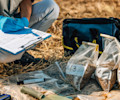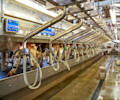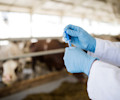With World Antimicrobial Awareness Week drawing to a close, the FAIRR Initiative urges investors to take action on antimicrobial resistance (AMR).
AMR is an urgent public health challenge, responsible for at least 700,000 deaths every year. This figure is currently set to rise to 10 million by 2050, which is anticipated to cost $100 trillion in global economic losses. The threat of AMR is driven by the overuse and over-prescription of antibiotics across multiple industries, from animal agriculture to pharmaceuticals.
This is an issue that requires urgent action from a range of stakeholders and industries. Livestock farmers, for example, routinely administer antibiotics to healthy animals as a means of promoting growth and preventing infections, putting the long-term efficacy of these vital drugs at risk. The Coller FAIRR Protein Producer Index, which assesses 60 of the world’s largest meat, fish and dairy producers on the most material ESG issues, ranks 70% of companies as ‘High Risk’ for Antibiotics, indicating extremely poor levels of antibiotic stewardship. We, therefore, urge investors to use their influence and encourage protein producers to reduce antibiotic usage and adopt a more sustainable approach to managing disease in livestock.
As a founding partner of the Investor Action On AMR coalition, we are working to galvanise investor efforts to address the global threat of AMR. Twelve investor partners have already joined the initiative. They have committed to assessing and integrating the risks, opportunities and impacts relating to AMR as part of their investment decisions. They have also pledged to apply a ‘One Health’ lens when considering the impacts of AMR, taking a holistic and multi-sectoral approach that accounts for the current and potential effects of AMR on humans, animals and the environment. As a member of Investor Action On AMR, we urge investors to act now to help prevent the potentially devastating results of global resistance to antimicrobials becoming a reality.
FAIRR insights are written by FAIRR team members and occasionally co-authored with guest contributors. The authors write in their individual capacity and do not necessarily represent the FAIRR view.












